JAJSGQ2F August 2013 – March 2019
PRODUCTION DATA.
- 1 特長
- 2 アプリケーション
- 3 概要
- 4 改訂履歴
- 5 Pin Configuration and Functions
- 6 Specifications
- 7 Detailed Description
- 8 Application and Implementation
- 9 Power Supply Recommendations
- 10Layout
- 11デバイスおよびドキュメントのサポート
- 12メカニカル、パッケージ、および注文情報
パッケージ・オプション
メカニカル・データ(パッケージ|ピン)
- RGR|20
サーマルパッド・メカニカル・データ
- RGR|20
発注情報
8.2.1.3 Application Performance Plots
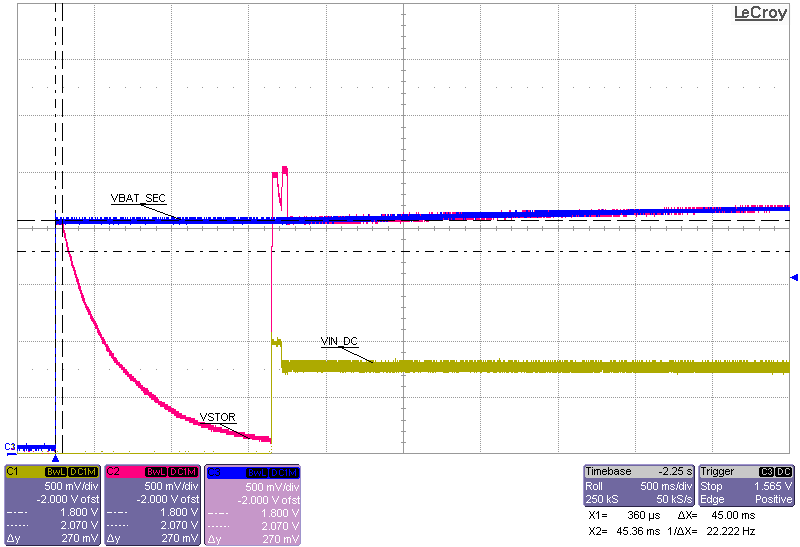
| Sourcemeter with VSOURCE = 1.0 V and compliance of 8.5 mA subsequently applied to VIN_DC |
| VBAT_SEC = 0.1 F capacitor charged to 2.0 V |
| Resistance on VSTOR = 100 kΩ |
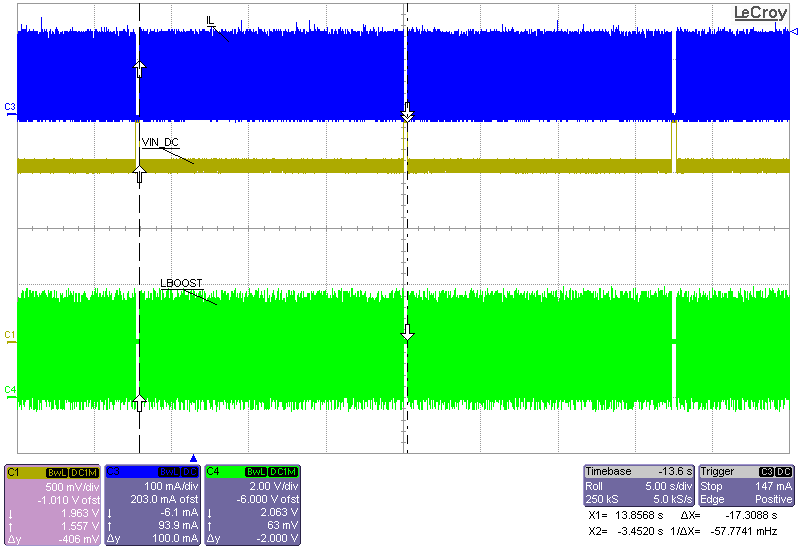
| VIN_DC = sourcemeter with VSOURCE = 2.0 V and compliance of 43 mA |
| VBAT_SEC = sourcemeter with VSOURCE = 3.0 V and compliance of 1 A |
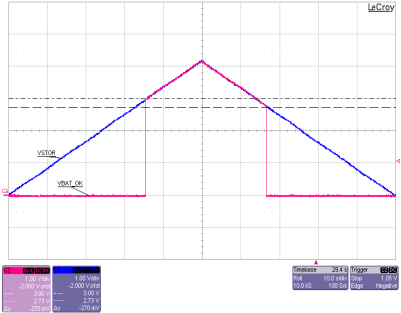
| VIN_DC = 1.5 V with 75 Ω series resistance |
| No storage element on VBAT_SEC or VBAT_PRI |
| VSTOR artifically ramped from 0 V to 4.2 V to 0 V using a power amp driven by a function generator |
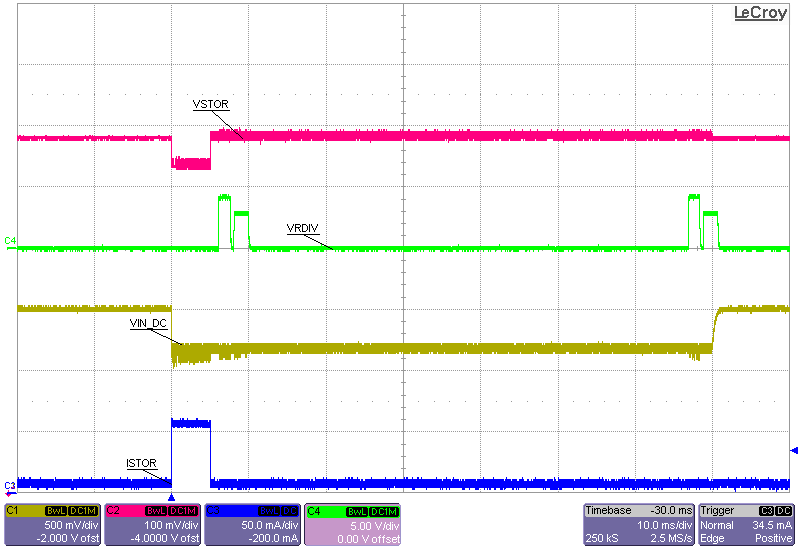
| VIN_DC = 1.5 V with 75 Ω series resistance |
| VBAT = 4.2 V charged 0.5 F capacitor |
| R(VSTOR) = open to 84 Ω to open |
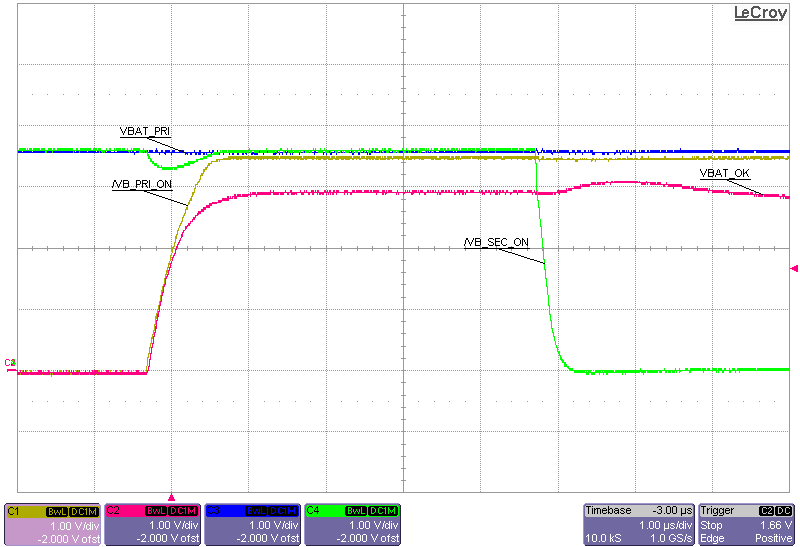
| VIN_DC = 1.5 V with 75 Ω series resistance; VBAT _PRI = 3.6 V power supply |
| 0.5 F super capacitor on VBAT_SEC; 1kΩ load on output of MUX FETs (VOR) |
| VSTOR artifically ramped from 0 V to 4.2 V using a function generator |
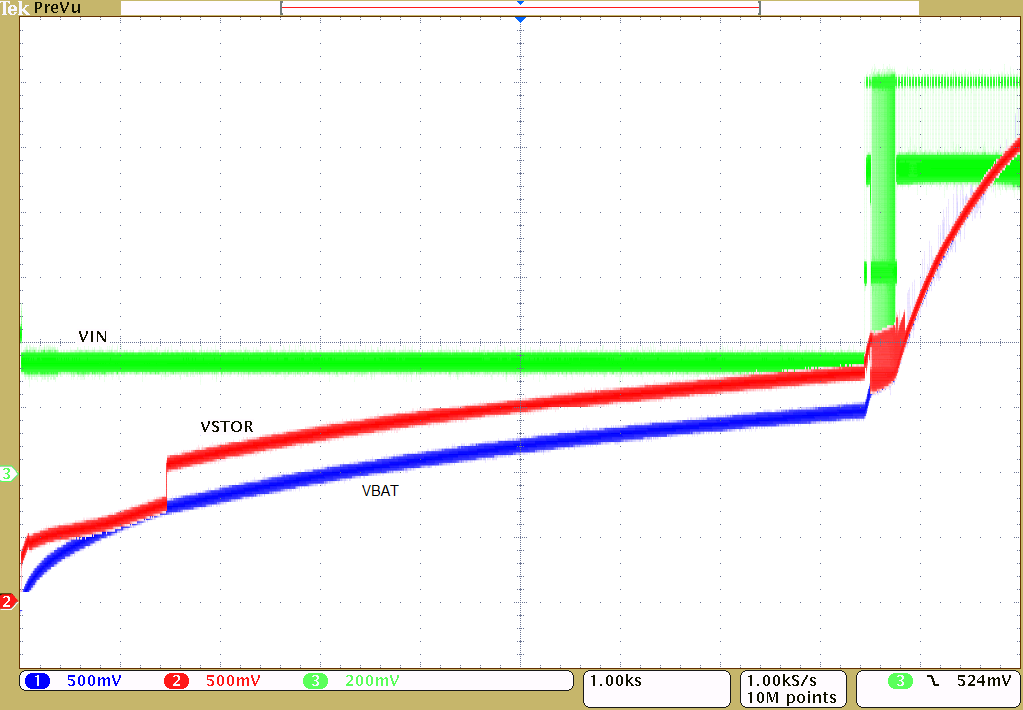
| VIN_DC = source meter with 1.2 V compliance and ISC = 1 mA |
| 120 mF super capacitor on VBAT_SEC |
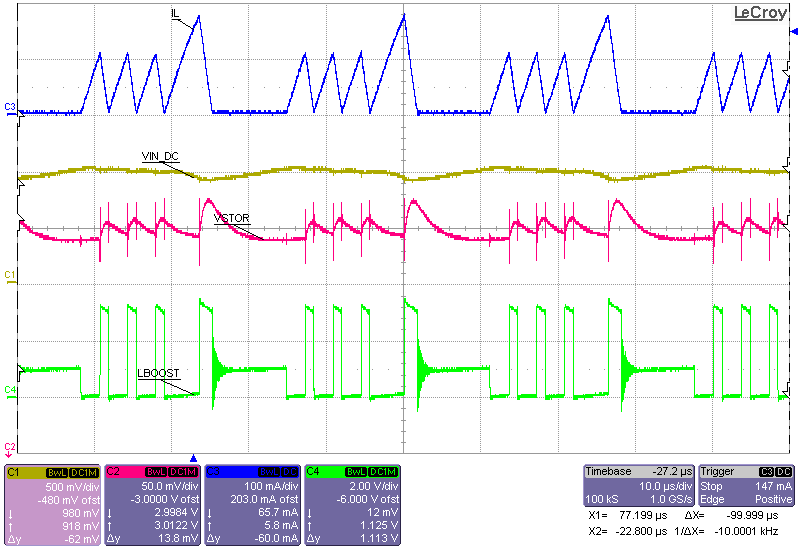
| VIN_DC = sourcemeter with VSOURCE = 2.0 V and compliance of 43 mA |
| VBAT_SEC = sourcemeter with VSOURCE = 3.0 V and compliance of 1 A |
| IL = inductor current |
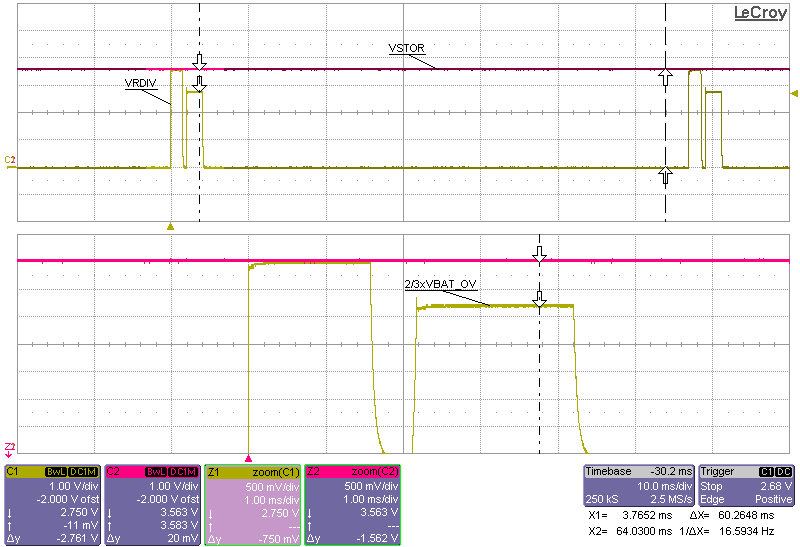
| VIN_DC = sourcemeter with VSOURCE = 2.0 V and compliance of 43 mA |
| VBAT_SEC = sourcemeter with VSOURCE = 3.6 V and compliance of 1 A |
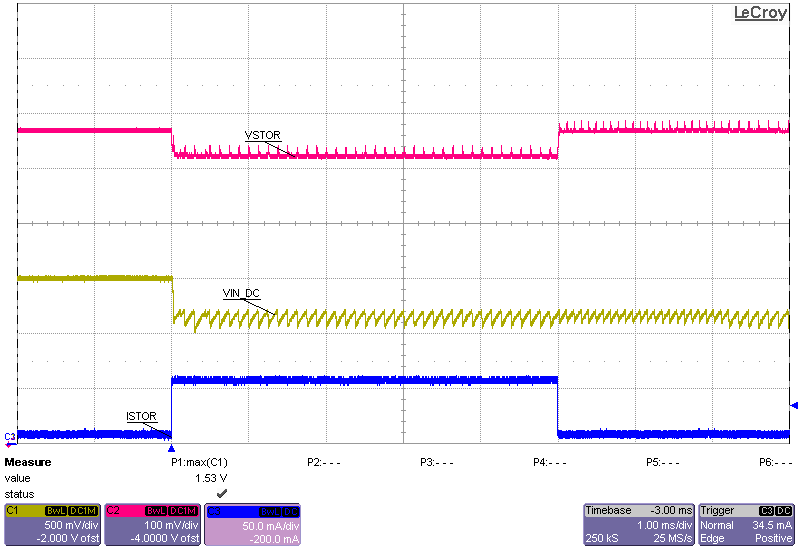
| VIN_DC = 1.5 V with 75 Ω series resistance |
| VBAT = 4.2 V charged 0.5 F capacitor |
| R(VSTOR) = open to 84 Ω to open |
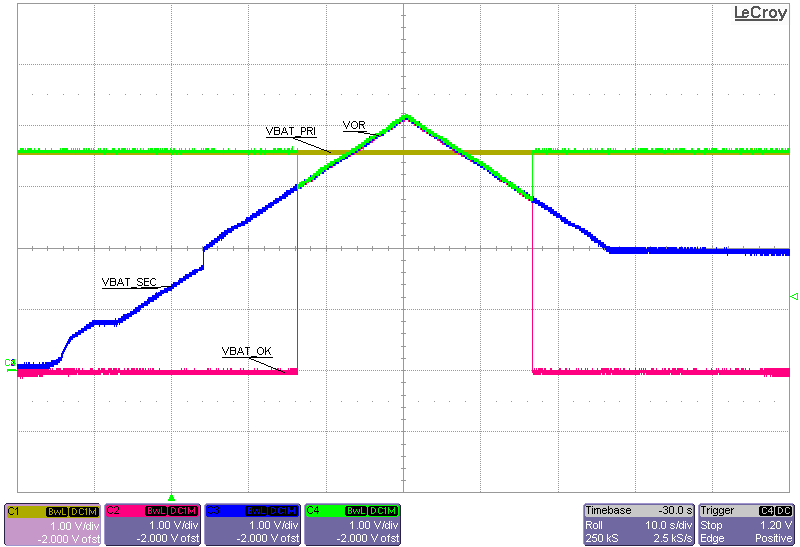
| VIN_DC = 1.5 V with 75 Ω series resistance; VBAT _PRI = 3.6 V power supply |
| 0.5 F super capacitor on VBAT_SEC; 1kΩ load on output of MUX FETs (VOR) |
| VSTOR artifically ramped from 0 V to 4.2 V to 0 V using a function generator |
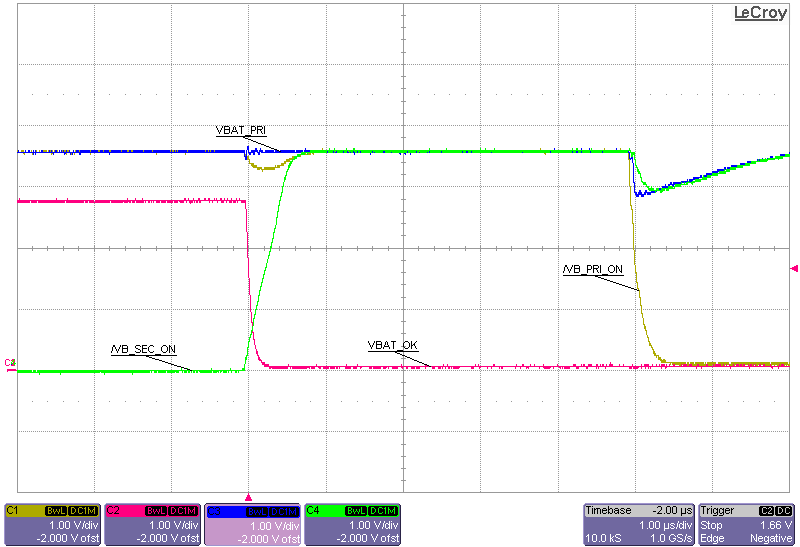
| VIN_DC = 1.5 V with 75 Ω series resistance; VBAT _PRI = 3.6 V power supply |
| 0.5 F super capacitor on VBAT_SEC; 1kΩ load on output of MUX FETs (VOR) |
| VSTOR artifically ramped from 4.2 V to 0 V using a function generator |